California's Rhone
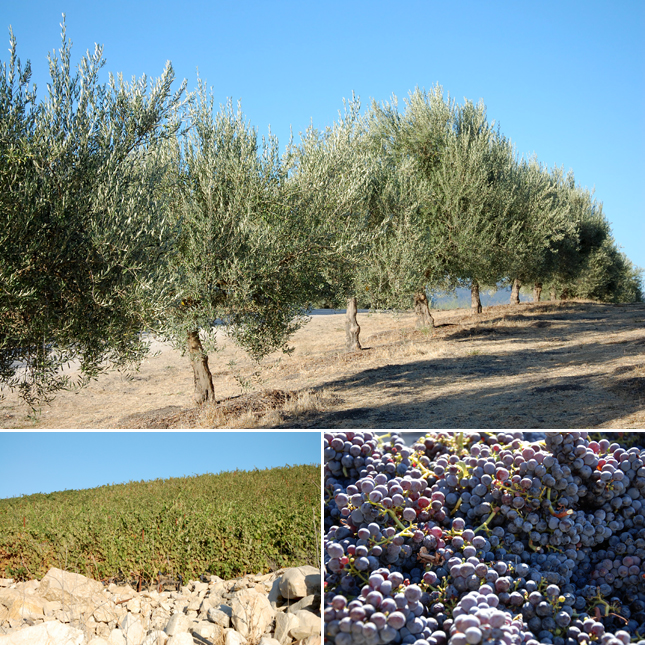
Winedom is full of arcane terms. Words like brix, acetification or ullage, to name but three. To the untrained ear listening to wine people chat must sometimes sound like two Martians conversing. Most of the jargon is easy to understand once you get the definition. Brix is the sugar-to-water ratio in a liquid. Acetification is when acetic acid is produced in a wine and turns it to vinegar. Ullage is the space between the fluid and the top of a barrel or the space between the south end of a cork and the top of the wine in a bottle neck.
Some wine terms are just too vague to be quickly defined, like terroir. Literally translated terroir is the French word for “soil.” Over time this word has been so bandied about that the authentic spirit of the term has become difficult to understand.
The term terroir grew legs back in the early part of the 20th century in, of course, France. The two initiators of the notion of terroir, that being, among other things, a wine recognizable or undeniably of a specific place, were Joseph Capus (1867-1947) and Baron Pierre le Roy de Boiseaumarié (1890-1967), owner of Chateau Fortia in the Châteauneuf-du-pape.
As a plant pathologist, minister of agriculture and senator Capus’ career was dedicated to delineating growing regions or appellations. His work birthed a system of rules that are still occasionally called le loi de Capus (the law of Capus). Some of Capus’ recommendations and observations about improving the quality of wine production have been turned into the protections producers and consumers still rely on to prevent frauds from selling counterfeit goods. Another result of Capus’ work was stated in the law that reads, in part, that, “...using grape varieties hallowed by local loyal and established custom...” was to be mandatory.
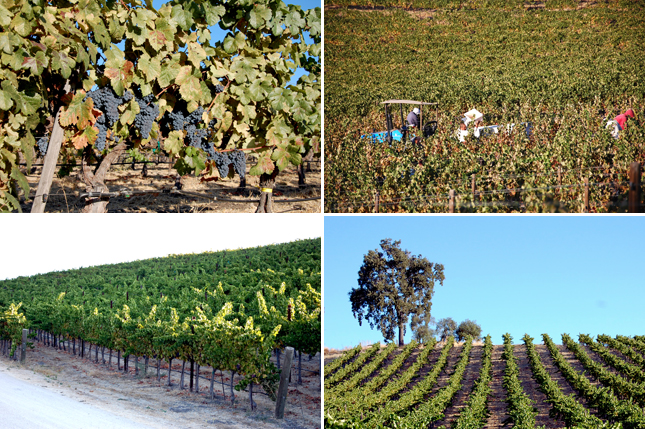
It was Baron Pierre le Roy de Boiseaumarié who took Capus’ ideas farther and solidified the more abstract notion of terroir. As custodian of his Chateau Fortia, the Baron was annoyed by the number of inauthentic and adulterated wines on the market -- many of the fakes bore his estate’s label. To combat this he cataloged everything from which agricultural methods worked best in his locality, to what the proper ripeness ought to be at harvest and more importantly, which grape varietals produced the best wines in his region. By his estimation thirteen types of grapes thrived in his part of the Rhône and made the best quality wine. Through his efforts Boiseaumarié elevated the status of Châteauneuf-du-pape and demonstrated to other estate owners that place/terroir was important if for no other reason than to boost consumer confidence.
Among the Rhône wineries that benefited from the idea of terroir was Château Beaucastel. The chateau has been making wine since the time of the Avignon popes who loved the wines of the region so much they purchased whole vineyards or entire vintages with the rapacity only church leaders seem to possess. By the early 20th century the chateau came into the hands of the Perrin family who have made the winery into one of the world's most prestigious brands. For generations the winery has worked to make wines that genuinely express the character of the region.
Briefly, for those unfamiliar with the Rhône or the character of the region, here are the basics. Why this matters will be demonstrated shortly.
The Rhône is a region in southeastern France that begins in the north in the department of Isère, runs southward for a little over 100 miles to the department of Bouches-du-Rhône, about 15 miles shy of the Mediterranean. The region is divided roughly in half at the 45th parallel. (Map*)
Northern Rhône wines differ from their southern partners in composition. Northern Rhônes are usually mostly Syrah, sometimes with a of smidge (about 5%) of Viognier added. A few whites are made in the north, notably the 100% Viognier wines of Condrieu and Hermitage.
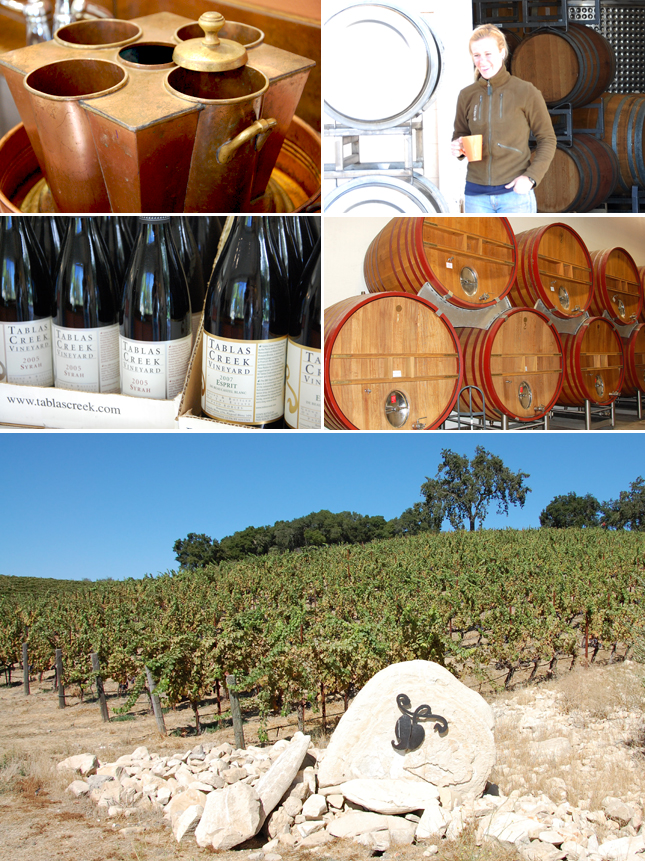
The Southern Rhône is more of a mélange, in both senses of the word. First it is a mixture, second, a geological term meaning: a metamorphic rock formation created from sediment scraped off the top of a downward-moving tectonic plate in a subduction zone. In the south blending is the norm. The grapes most used are Grenache, Syrah, Mourvèdre, Carignan and Cinsault for the reds. Marsanne, Roussane, and Viognier are the main white grapes.
The Rhône as a wine region has been cultivated since the age of the Greeks but it popped onto the international scene in the 13th century when the pope packed his mitre in a huff, left Rome and moved to Avignon, France. Initially this proved to be a good move for the popes and for the locals, among them the makers of the Valreas wines made in the Vaucluse region of the Rhône.
The Valreas wines allegedly had the power to keep popes alive for a long time. One legend has it that the College of Cardinals elected a weak, ill man to be the second pope in Avignon. This being the time of the Western Schism, (the political and geographical split between the Roman Catholic Church) the tensions between Avignon and Rome were high. The election of a weak pope was seen as a way of hastening the end of the division. Things didn’t go as expected. The new Pope (John XXII) got better, he claimed, because he drank Valreas wines. He reigned for 18 years and furthered the duration of the Avignon Papacy simply by keeping himself pickled and in the pink. The pope believed in the healing powers of the wines so much he purchased the Valreas estate in 1317.
Other elements that make Rhône wines distinctive are soil and climate. Climactically few places in grape growing regions have the dramatic diurnal shifts (day to night difference in temperature) that the Rhône region experiences. The region typically sees a 40℉/22℃ change in temperature. Many of the types of grapes that grow here benefit from the slow ripening that the shifts provide. As for the dirt, the soils are mineral-rich and stony, more so in the south. Here one finds the famous galets which are found in great numbers around Châteauneuf-du-pape. Galets are rocks about the size of a fist that cover the ground and are placed at the base of vines. Throughout the day they absorb heat then keep the ground warm over night.
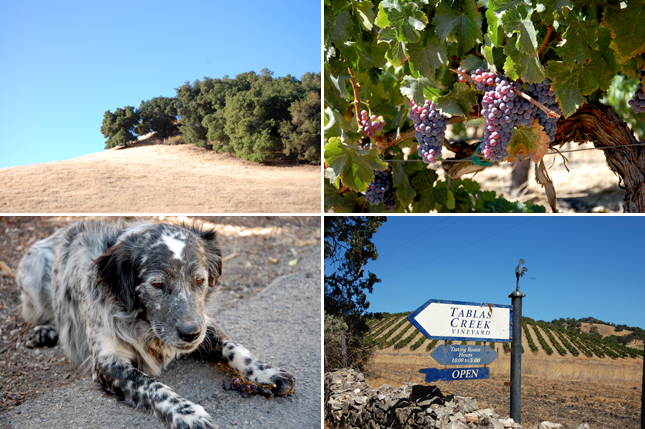
Armed with this information it is easier to discuss how and why the Tablas Creek Winery chose their location in Paso Robles, California and grew a winery from the ground up.
Tablas Creek is unique among wineries in that it began as an idea. That idea was to look for a place/terroir that possessed the ideal soils and climates to produce top-quality Rhône varietals. Why Rhône? Simply put, there wasn’t a category called American Rhône wines. In the late 80‘s winery founders Robert Haas and the Perrin brothers Jean-Pierre and Francois of Chateau Beaucastel traveled to all of California’s established wine regions, from Mendocino to Ventura, looking for that Rhône-esque sweet spot. Of the many places they visited none possessed the qualities they were looking for until they arrived in Paso Robles; a place notable for walnuts, sulphur springs and infamous for being the town where James Dean was pronounced dead.
Like the Rhône there are microclimates in Paso Robles that experience the same wild diurnal shift, sometimes as much as a 50℉/28℃ difference in one day.
Another shared trait are the mineral rich soils around Paso Robles. The land along the Tablas Creek (from which the winery got its name) is made of soft, porous limestone that came into being as the result of epic geological activity. In this area the Pacific and North American tectonic plates, divided by the notorious San Andreas fault line, grind against one another. A portion of the North American plate broke off, was pushed northward and formed what are now the Santa Lucia Highlands. This piece of chipped plate, which was part of an ocean floor, is Cretaceous sedimentary rock. It forms a limestone vein through much of Paso Robles and down through the fertile lands of the Santa Ynez Valley. It is not uncommon for vineyard workers to unearth whale bones and fossils here.
In 1987 Haas and the Perrin brothers purchased 120 acres of this land that reminded them of the Châteauneuf-du-pape. In 1990 the lengthy process of propagating the fourteen clippings, the maximum allowable number of clippings they could bring into the US from France, began. These fragile shoots were quarantined by the US Department of Agriculture for three years before they could be brought to California and reproduced. The mature clippings were systematically planted. The first vintage was released in 1997. By 2002 they had a tasting room that today receives about 25,000 visitors. They produce 16,000 cases annually.
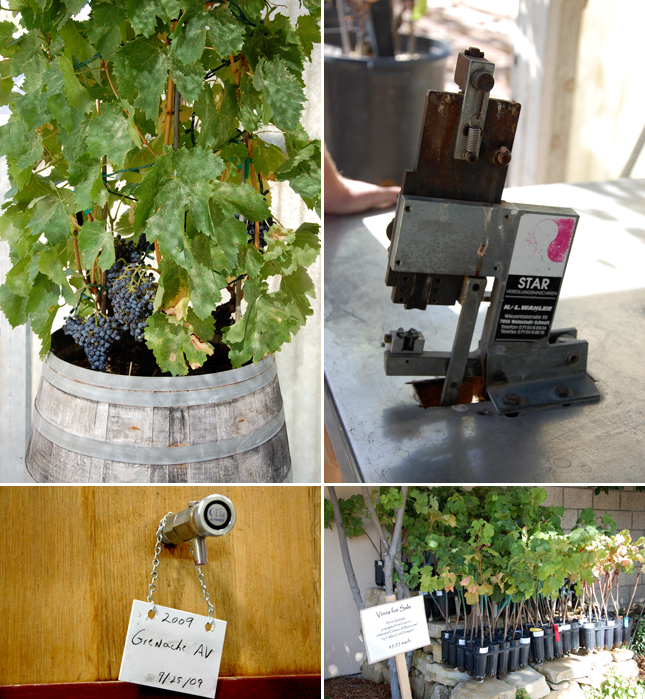
The original clippings cut from the vines at the Beaucastel estate in Châteauneuf-du-pape in the late 80s are still alive and growing in barrels in the greenhouses that border the edge of the property. They are the progenitors of over 400 vineyards and/or wineries that specialize in Rhône style wines and they are for sale - not just to growers and vintners but to the public as well.
As a true, Rhône-like winery/estate Tablas Creek takes a very Old World approach. Their methods are deliberate, custodial and by most standards, slow. Really slow. The belief is that vineyard management and winemaking is a generational practice, not a get rich quick scheme. As founder Robert Haas explained to his son, Jason, “I didn’t do any of this for me or for you, I did it for your kids.”
The Tablas Creek vineyards have been dry farmed since inception (they do have an irrigation system but it has only been used twice in extreme drought conditions in ten years). They practice sustainable agriculture and are certified organic. The vineyards are maintained by a crew of full-time employees who work by hand year-round and are familiar with every row, trellis and rock (an uncommon practice at American vineyards). At the end of the growing season grapes are hand-harvested in up to four passes per lot. This hand-sorting in the vineyard means that the fruit that reaches the winery is at optimal ripeness and that any inferior fruit is left for the vineyard dogs to snack on. The fruit brought in is crushed, fermented and kept separate enabling the winemaker great latitude when it comes to blending, among others, the Esprit de Beaucastel (a blend of Mouverdre, Grenache, Syrah and Counoise) and the Esprit de Beaucastel Blanc (Rousanne, Grenache Blanc, Picpoul Blanc) their flagship wines. The wines are aged in neutral, a.k.a. “experienced” or “molested” (two terms Tablas Creek winemaker Neil Collins uses), French oak or in huge foudres that allow the terroir to speak.
Jason Haas talks about importing Château Beaucastel's vines from France.
Tablas Creek also makes Côtes de Tables (red Rhône blend), Syrah, Counoise, Tannat, Côtes de Tables Blanc (white Rhône blend), Rousanne, Vermentino, Grenache Blanc, and Chardonnay.
For more information contact:
Tablas Creek Vineyard
9339 Adelaida Road
Paso Robles CA 93446
Phone 805.237.1231
E-mail: info@tablascreek.com
www.tablascreek.com
Château Beaucastel - Chateauneuf-du-Pape, Vallée du Rhône, Perrin & Fils, France
The Rhône Rangers - Advancing the knowledge and enjoyment of Rhône wines produced in America.
Hospice du Rhône - The world's largest celebration of Rhône variety wines.
* Established in 1698, Berry Brothers & Rudd is a UK wine shop. They supply the British Royal Family with their wines and have a great online site with interactive maps.






 Share Article
Share Article
Reader Comments (7)
Tablas Creek is one of our all time favorites. We visited too.
Posted about them back on Oct. 18, 2007 as a recommendation for Thanksgiving wines.
LL
Very informative, interesting post. I recently visited California's south coast wine country - can't wait to visit the northern vineyards some day!
--We hope you get a chance to go soon. Visit in the spring or early summer if possible, when it's greener.
A&K
Gorgeous post! I want to crawl into the wine country and visit for ... months. I do not usually drink Rhone - but the post makes me want to try some of it. Can't wait!
For as many times as I've driven from SF to LA I have never stopped in Paso Robles. I have had Tablas Creek though! Gorgeous pictures. Love this time of year at California wineries.
The Jason Haas interview is great. Pretty amazing to see how Tablas Creek has elevated the quality of so much West Coast syrah. Clearly, these folks owe a great debt to the foresight and generosity of Robert Haas.
What a beautiful informative post! I am learning so much about wine. I really do love California red wines! I'm going to look more into the Tablas Creek. Thanks Amber!
We have gotten the Tablas Creek wine after reading your article and really really enjoyed it! It is now one of our favorites!